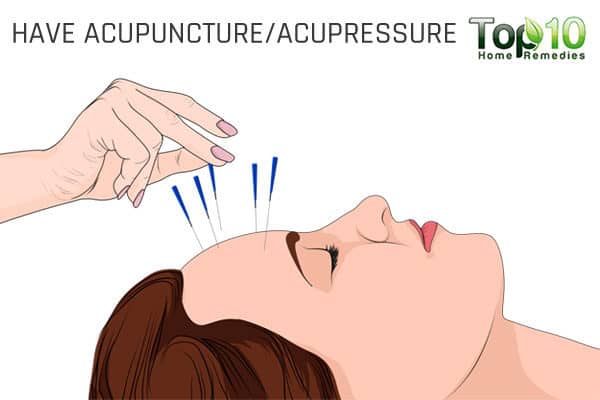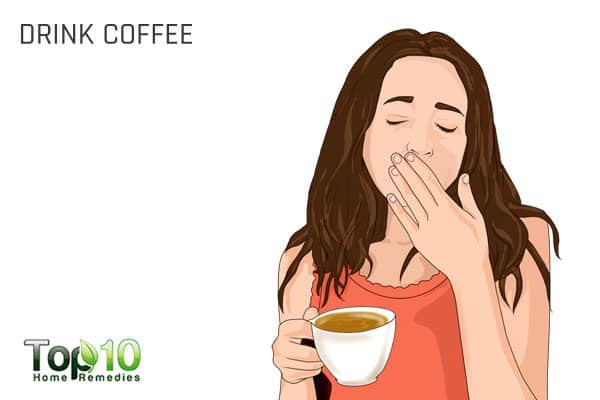07/2019
How to Deal with Migraine Headaches
It only takes one or two full-blown migraines to make a person ready to try just about anything to make them go away.
In the United States, more than 37 million people suffer from migraines. Almost 5 million experience at least one migraine attack per month, while more than 11 million blame migraines for causing moderate to severe disability.
A migraine is a strong, pounding headache on one or both sides of the head. Among the many factors that cause migraine headaches, changes in the amount of a chemical called serotonin in your body is a prominent one.
When serotonin levels are high, your blood vessels shrink. When serotonin levels are low, your blood vessels swell. This swelling can cause pain and other problems.
A 2015 study published in the American Headache Society reports that the prevalence of migraine headaches is high, affecting roughly 1 out of every 7 Americans annually.
Migraines and headaches are among the leading reasons that people see a doctor, including outpatient and emergency department visits. It remains an important public health problem, particularly among women during their reproductive years (1).
Also, a 2016 report by World Health Organization notes that half to three-quarters of adults 18 to 65 years old worldwide have had a headache in the last year and, among those individuals, 30 percent or more have reported having a migraine (2).
Apart from a strong headache, migraines also cause symptoms including sensitivity to light and sound, blurred vision, visual aura, nausea, vomiting and fatigue.
Living with migraine headaches can be really tough. While medications can help treat migraines, you can keep migraines under control with healthy habits and simple non medical remedies as well.
Here are the top 10 ways to deal with migraine headaches.
1. Use Cold Therapy
When suffering from a migraine headache, apply cold compresses to your head and/or neck. Ice packs have a numbing effect, which may dull the pain.
A study published in Evidence-Based Complementary and Alternative Medicine in 2006 reports that cold application alone may be effective in some patients suffering from migraine attacks. However, its combination with conventional drugs should be investigated in future studies (3).
- Wrap a few ice cubes in a clean towel.
- Place it on your temples, forehead and/or the back of your neck for 10 to 15 minutes.
- Repeat as needed.
Caution: Never apply ice directly on the skin, as it can cause frostbite.
2. Drink Ginger Tea
Ginger can help ease headaches caused by many conditions, including migraines.
Its anti-inflammatory nature helps block prostaglandins, which are chemicals that promote muscle contractions, impact hormones and regulate inflammation in blood vessels in the brain.
A 2014 study published in Phytotherapy Research indicates that the effectiveness of ginger powder in decreasing migraine severity and duration was statistically comparable to the prescription drug sumatriptan, and with fewer side effects (4).
Drink ginger tea up to 3 times throughout the day until you get relief. To make ginger tea:
- Add 1 tablespoon of grated ginger to 1½ cups of water.
- Bring the water to a boil, then cover and let it steep for 5 minutes.
- Strain it and add a little raw honey and lemon juice.
3. Get Massage Therapy
You can also try massaging therapy to prevent and treat an oncoming migraine.
Massage helps ease migraine headaches by blocking pain signals sent to the brain. It also boosts serotonin activity and stimulates certain serotonin receptors, which in turn ease the pain as well as reduce the frequency of migraine attacks.
Massage even improves sleep quality and improves perceived stress and coping skills.
A 2006 study published in the Annals of Behavioral Medicine found that massage therapy helps in the treatment of migraines (5).
- Apply some warm mustard or olive oil on your forehead.
- Using your fingers, gently massage in a circular motion the middle of the forehead and temples.
- Massage for 10 to 15 minutes.
- Repeat as needed.
4. Take More Magnesium
Magnesium can help reduce migraine attacks. It is particularly beneficial when a migraine is related to a woman’s menstrual period or in people who have abnormally low levels of magnesium.
A study published in Headache in 2001 shows that 1 gram of intravenous magnesium sulfate is an efficient, safe and well-tolerated drug in the treatment of migraine attacks (6).
A 2013 study published in Headache reports that taking daily magnesium supplements can be effective at preventing menstrual-related migraines (7).
In a 2014 study published in the Journal of Neural Transmission, researchers found that a magnesium deficiency may be present in up to half of migraine patients, and treatment with oral magnesium is beneficial (8).
- Include food in your diet that naturally contains magnesium. Some foods rich in magnesium are dark leafy greens (spinach and chard), pumpkin seeds, almonds, mackerel, tuna, low-fat yogurt, black beans, lentils, avocados, figs, bananas and dark chocolate.
- You can also take magnesium supplements. For the correct dosage, consult your doctor first.
5. Have Acupuncture/Acupressure
Whether acupuncture or acupressure, both these techniques can help deal with migraine headaches.
In acupuncture, fine needles are used to apply pressure to specific points on the body to relieve pain and other symptoms. In acupressure, fingers are used to apply the pressure.
A 2012 study published in CMAJ found that acupuncture is at least as effective as prophylactic drug therapy for migraines, and it is safe, long-lasting and cost-effective (9).
Another study published in Pain Management Nursing in 2014 reports that acupressure has been shown to be effective for relieving a variety of pains in different populations (10).
Some of the acupressure points, which when stimulated can reduce headache pain, include Joining the Valley (L 14 or He Gu), Third Eye Point (GV 24.5 or Yin Tang), Drilling Bamboo (B2 or Bright Light), Bigger Rushing (LV 3 or Great Surge), Above Tears (GB 41 or Zu Lin Qi) and Wind Mansion (GV 16 or Feng Fu).
6. Drink Coffee
A cup of strong coffee may be all you need to get relief from migraine symptoms. The caffeine in coffee restricts blood vessels and blocks certain receptors that could be causing the pain. In fact, caffeine is present in some migraine medications.
A study published in the Journal of Headache and Pain in 2017 provides evidence for the role of caffeine as an analgesic adjuvant in the acute treatment of primary headache with over-the-counter drugs, caffeine doses of 130 mg enhance the efficacy of analgesics in tension-type headaches and doses of ≥100 mg enhance benefits in migraines (11).
However, when it comes to coffee, you need to drink it in moderation. Too much caffeine may actually cause a migraine. It may also lead to a severe caffeine withdrawal headache. Do not take more than one or two cups of coffee a day.
7. Avoid Trigger Foods
Several foods and beverages are known migraine triggers. According to the Institute for Quality and Efficiency in Health Care (12), some of the food triggers are:
- Foods with nitrates, such as hot dogs, deli meats, bacon and sausage.
- Chocolate.
- Cheese, such as feta, cheddar, Parmesan and Swiss.
- Foods that contain monosodium glutamate (MSG).
- Ice cream or iced drinks.
- Processed foods.
- Pickled foods.
- Beans.
- Dried fruit.
- Cultured dairy products, such as buttermilk, sour cream and yogurt.
- Eggs.
- Artificial sweeteners, such as aspartame.
8. Avoid Missing Meals
To prevent migraine attacks and reduce the severity of headaches, it is important to eat at regular intervals. The point here is to avoid fasting for long durations at any cost.
Fluctuations in blood sugar can trigger your migraine response.
A 2008 Brazilian study published in Arquivos de Neuro-Psiquiatria reports that fasting (not eating for long periods of time) was one of the most commonly reported migraine triggers, and its avoidance may decrease headache frequency and also improve patients’ quality of life (13).
So, make an effort to be consistent and eat your meals at about the same time every day. In every meal, include a lean protein to help keep glucose levels in check. Also, eat a healthy diet as much as possible.
In addition, do not ignore the importance of water to keep your body hydrated.
9. Get Proper Sleep
Good sleep is important for overall health and is especially important for migraine patients to lead a quality life.
Sleep disruptions can cause changes in key migraine-related proteins and trigger migraine headaches. Lack of sleep will also affect your hormone levels as well as your stress levels, both of which are migraine triggers.
Hence, to keep migraine attacks at bay, be consistent about when you go to bed and get up. Aim for seven to eight hours of sleep per night.
To enjoy sound sleep, choose a calm room where you can turn off the lights and go to sleep without worrying about noise or sound disturbance.
Also, save your bedroom for sleep and avoid watching television or taking work materials to bed.
10. Keep a Migraine Diary
Different people will have different migraine triggers. Avoiding triggers can help you prevent the headaches and lead a healthy life.
Maintaining a diary will help you determine what triggers your migraines. Keep a record of when your migraines start, what you were doing at the time, how long they last and how you got relief from the pain.
Some well-known migraine triggers are:
- Strong smells.
- Alcohol.
- Bright lights.
- Loud noises.
- Changes in weather.
- Extreme tiredness.
- Stress.
- Depression.
- Sleep disturbance.
- Missing meals or fasting.
- Menstruation.
- Birth control pills.
- Caffeine withdrawal.
- Heavy workouts.
Additional Tips
- If you get a “hangover” after one drink, it is better to avoid drinking completely.
- Smoking can trigger migraines. Quitting smoking can reduce your migraines and their severity.
- Stress can cause the body to release hormones that may affect your neurological system and in turn trigger migraine headaches. So, try to manage your stress.
- Get at least 30 minutes of exercise on most days of the week.
- Riboflavin (vitamin B2) supplements can also be considered. Consult your doctor first.
- The herb butterbur can prevent migraines, possibly because it supports healthy blood flow to the brain.
Expert Answers (Q&A)
Answered by Dr. Martin M. Mortazavi, MD (Neurosurgeon)
How long do migraine headaches last?
They can last from hours to days.
What foods can trigger an episode of migraine?
There are many types of foods that can trigger a migraine, but the most notorious are cheese and red wine.
How can you differentiate between a common headache and a migraine headache?
Migraine has several distinct qualities. It usually is preceded by the so-called ‘Aura’ which means that patients have a sense that it is coming, which is associated with flashes in the eyes, or numbness around the mouth or a special feeling in their stomach.
It is usually associated with nausea. The quality of pain is throbbing. Patients usually need to be in a dark and silent room as light and sound might also be the irritants.
Can migraine be cured permanently?
No, migraine cannot be cured permanently.
Why is migraine more common in females?
Although it is not fully clear, there might be a connection between migraine and female sexual hormones.
What is the easiest way to get relief from a migraine headache?
There are many medicines that provide relief from the attacks. There are some medicines that can decrease the frequency of the attacks as well.
How do you know if a headache is a migraine or a stroke?
Migraine headache is a chronic process associated with multiple classical co-symptoms outlined above. Stroke headache is acute and associated with neurological deficit. Although migraine can unusually also be associated with neurological deficit, it is not typical for migraine to have neurological deficits.
Can migraine headache lead to stroke?
Unusually yes, as the artery that goes into periodic spasm in migraine, can unusually lead to decreased blood flow to the specific area of the brain that the artery is bringing the blood to. But it is extremely unusual.
Please provide some important tips regarding migraines for the benefit of the readers.
- Avoid stress
- Avoid drinking red wine
- Avoid cheese
- Consider medication to reduce the intensity of each attack
- Consider medication to reduce the frequency of the attacks
About Dr. Martin M. Mortazavi, MD: Dr. Mortazavi is the Founding Chairman of the National Skull Base Center. He is also the Founding Chairman of the California Institute of Neuroscience and the Director of its Cerebrovascular, Skull Base and Tumor program.
Dr. Mortazavi pursued a postdoctoral research fellowship in neurotrauma and regeneration at Barrow Neurological Institute. In addition to treating the full panorama of Brain and Spine diseases, Dr. Mortazavi treats complex tumors and vascular lesions of the brain and the spinal cord.
Resources:
- The prevalence and burden of migraine and severe headache in the United States: updated statistics from government health surveillance studies. Headache. https://www.ncbi.nlm.nih.gov/pubmed/25600719. Published January 2015.
- Headache disorders. World Health Organization. http://www.who.int/mediacentre/factsheets/fs277/en/.
- Cold Therapy in Migraine Patients: Open-label, Non-controlled, Pilot Study.Evidence-based Complementary and Alternative Medicine. Published December 2006.
- Comparison between the efficacy of ginger and sumatriptan in the ablative treatment of the common migraine. Phytotherapy research : PTR. https://www.ncbi.nlm.nih.gov/pubmed/23657930. Published March 2014.
- A randomized, controlled trial of massage therapy as a treatment for migraine. Annals of behavioral medicine : a publication of the Society of Behavioral Medicine. https://www.ncbi.nlm.nih.gov/pubmed/16827629. Published August 2006.
- Efficacy of intravenous magnesium sulfate in the treatment of acute migraine attacks. Headache. https://www.ncbi.nlm.nih.gov/pubmed/11251702. Published February 2001.
- Headache Toolbox- Magnesium. Headache: The Journal of Head and Face Pain, American Headache Society. https://americanheadachesociety.org/wp-content/uploads/2016/06/Magnesium.pdf.
- Why all migraine patients should be treated with magnesium. Journal of neural transmission (Vienna, Austria : 1996). https://www.ncbi.nlm.nih.gov/pubmed/22426836. Published May 2012.
- The role of acupuncture in the treatment of migraine. CMAJ : Canadian Medical Association Journal. https://www.ncbi.nlm.nih.gov/pmc/articles/PMC3291665/. Published March 06, 2012.
- The effectiveness of acupressure on relieving pain: a systematic review. Pain management nursing : official journal of the American Society of Pain Management Nurses. https://www.ncbi.nlm.nih.gov/pubmed/23415783. Published June 2014.
- Caffeine in the management of patients with headache. The Journal of Headache and Pain. https://thejournalofheadacheandpain.springeropen.com/articles/10.1186/s10194-017-0806-2. Published October 24, 2017.
- Migraine: Overview. National Center for Biotechnology Information. https://www.ncbi.nlm.nih.gov/pubmedhealth/PMH0072557/. Published November 19, 2015.
- Trigger factors in migraine patients. Arquivos de Neuro-Psiquiatria. http://www.scielo.br/scielo.php?script=sci_arttext&pid=S0004-282X2008000400011.











